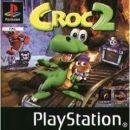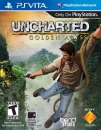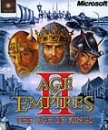
In Spring 2008, Sony's top PlayStation executives gathered in an offsite management meeting to plan their second portable game system. Ask Sony's head of Worldwide Studios Shuhei Yoshida about it, and he'll give you a 700-word answer like it happened yesterday; however, the part that excited him most was what he learned about the role his teams would play this time around.
In that meeting, PlayStation boss Kaz Hirai said that he wanted the company's first-party studios to play an active role in designing the system, which may not seem like a big deal to an outsider, but Yoshida characterizes as "a total change" to how the company had gone about things previously. "There was very limited communication in the past, especially when it came to new hardware, because of the secrecy involved," he says. "[SCEI] had very tight security in terms of sharing information with us up through the PS3 days, so I saw a big sea change of culture and process."

Shuhei Yoshida is the current president of Sony's Worldwide Studios division, covering all first-party PlayStation development.
Sensing a need for someone to facilitate that process, Yoshida -- who at the time lived in the U.S. -- offered to return to Japan to be a middleman between SCEI's hardware division and Sony's development teams. "That [relationship] has to be developed," he says. "It just doesn't happen when Kaz says 'You two, talk!' It's not like that, so someone like me needed to be embedded in Tokyo and attend every platform discussion meeting... They might talk about, 'Oh we have this new technology that might be great for the next thing,' then I could relate them to the proper Worldwide Studio teams."
One of those first teams was Bend Studio, to whom Yoshida reached out shortly after the initial offsite meeting and who would go on to develop what most people consider the most ambitious and technically demanding launch game for the system, now known as PSVita: Uncharted: Golden Abyss.
Meanwhile, in Bend...
At the time, most of the Bend Studio team was back in Oregon -- the team is named after Bend, Oregon, the largest city in the relatively unpopulated state center -- developing Resistance: Retribution, their fourth PSP release in four years and their first non-Syphon Filter game in 10.

John Garvin (left) and Christopher Reese (right) head up Sony's Bend Studio as writer/director and technical director, respectively.
Led by co-directors John Garvin and Christopher Reese, they've long been one of Sony's most critically acclaimed teams (winning IGN's PSP game of the year award two years in a row). Yet they're also one of its lower-profile ones, doing less publicity work than studios like Naughty Dog -- as evidenced by their website, which as of this story going live hasn't been updated since June 2010 -- and making a decision years earlier to work on portable games in part so they could keep their staff numbers down.
"We're pretty small at 43 [people] to be making AAA third-person action games, especially in the genres that we like," says Garvin. "It's one of the reasons we moved to the PSP from PS2...we didn't really want to grow into the type of huge team that it takes to build next-gen games, and you could build a PSP game, a great one, with a small team. Then Sony went and made a next-gen handheld, so now we're not going to have much of a choice. [Laughs]"
Following Retribution, the team considered a direct sequel and started early design work, but their focus shifted as Vita took shape. "We knew about the Vita, we knew [Sony] needed to have a launch title, [and we knew] we were going to be doing it, so we basically got to choose what we wanted to do for that," says Reese.
They decided on a new entry in Naughty Dog's part-treasure-hunting, part-shooting Unchartedseries, which at the time had one game in stores and wasn't yet the breakout award-winner it's since become.

When first designing Golden Abyss levels, the Bend team would mock them up in "previs" videos using the extremely simple visual style seen here to make sure everything fit properly before moving forward with art.
"We chose Uncharted for a few reasons," says Garvin. "We were fans of the game, we knewUncharted 2 was going to be awesome and that the franchise was going to continue to grow and get better and better, and we felt that its style of gameplay lent itself to the Vita's new controls. In fact, our first slide deck, [in June] 2008, concentrated almost exclusively on interesting ways to use the controls: Touch melee, our grenade mechanic, examining objects, the touch-based journal, use of the camera, and so on."
Three and a half years later, all those features would make their way into the finished game.
As it turns out, this wasn't the first time the team had attempted a Sony portable launch title -- in 2004, they split themselves into two groups to simultaneously develop Syphon Filter: Logan's Shadow as a PSP launch title and Syphon Filter: Dark Mirror for PS2, before realizing they'd spread themselves too thin and preferred to be a one-game-at-a-time studio. Whether because of that memory or not, the team knew they needed to be disciplined to stay on schedule for Uncharted.
"It was extremely important for our studio to hit key internal and external milestones throughout development to make certain we were tracking," says Reese, "as there was no shortage of external reminders that we were to be a day-one launch title."

One of Garvin's early concept documents for the game listed it as Uncharted: Dark Secrets. Garvin says he probably has a half dozen temporary game titles lying around on different documents.
Developing the Tech, Jumping Through Hoops
Over the course of 2008 and 2009, the Bend team chipped away at the then-officially-untitled Uncharted project -- which at different points they called Uncharted: Project X and Uncharted: Dark Secrets, the latter of which may have been a better fit for Nintendo given its initials -- building a new engine, consulting with Sony, and setting up the mechanics that would make it feel at home in the series.
"We had been given such advanced access to SCEI and the hardware and the development tools very early on, so we were pretty much ahead of everyone," says Reese. And for better or worse, or probably both, being ahead of the curve meant being a guinea pig for Sony's tech group.
"They were using us to help them refine and build the hardware," says Garvin, noting that the team would get new versions of the development kits every three months as the hardware became more stable.
"Everything was always changing," he adds. "For the first year, our hardware didn't have sticks or buttons. For a year, we only had one dev kit in the studio, and it was the size of a PC. When the tools finally did support sticks, we had to use a Sixaxis controller and sort of Frankenstein it onto the touch pad using metal clamps. At one point there was only one dev kit that had to be shared by over 15 artists. The early touch screen technology took months to become responsive enough for gameplay... It was hard for [the art team] because all the early hardware used the PSP screen -- we didn't get the OLED until late in the process."
Reese, as the head of Bend's tech group, was in regular contact with SCEI's hardware team, testing the development hardware as it became available. He calls the situation a mix of "giddiness" and "frustration," noting that his team would sometimes "find critical issues with the hardware or SDK libraries and we would have to rethink certain approaches or paths of development we had embarked upon."

Garvin provided this screenshot showing the river section of Golden Abyss at a very early point in development. [Click to enlarge]
"Certainly one of the hardest challenges," he says, "was protecting the production pipeline to ensure the production team kept running even in the midst of catastrophic hardware failures. Lines of communication were wide open throughout Sony, so issues would tend to be quickly resolved and that was instrumental in preventing horrific roadblocks for the team."
In the midst of the tech chaos, Garvin says the mechanics moved forward without any major roadblocks or changes along the way -- after some initial pie-in-the-sky Vita hardware discussions, anyway. "At one of the earliest NGP meetings the whole concept of sticks versus no sticks was discussed," says Garvin. "Once it was decided that the device would have sticks, it went through many iterations of where they would be placed, how they would feel, etc. But that really didn't affect us because we knew our goal, at least in terms of the sticks, was to emulate what Uncharted was doing on the PS3."
"I think the iterations we had to go through for things like power consumption and heat management had a much bigger impact," he continues. "As the hardware evolved it became obvious that a game like Uncharted was going to push everything to the limit. Choices had to be made as to how all that was going to work. Some compromises had to be made, which is why I think we ended up going with a 'power budget' scheme -- if you want to run at full screen brightness, for example, you may have to turn off your Wi-Fi connection; that sort of thing."
"One particular element that did evolve constantly was the screen," says Reese. "The OLED didn't appear on development kits until later in the development process. We had to improvise and make our best bet on not only what the visuals could be but how it impacted gameplay. In the early days of development there was no such thing as a 5" OLED screen manufactured by anyone."
Yoshida speculates that the Bend team probably had the hardest time of all Sony first-party teams when it came to making things work properly on Vita, because their job was to "push the graphical limit, and break the [software development kit] drivers," he jokes.
Throughout this hamster-cage creative workflow, the Bend team also made demos of their game for Sony to show other studios what the hardware was capable of -- which led to a couple of instances where Uncharted found itself namedropped in early Vita press leaks -- but Garvin says this didn't impact the Bend team much, apart from having to create stable demos early in the process.
"While limited, there were a few opportunities where we did reach out to a couple of first and third-party teams to share some of that learned knowledge," says Reese. "I think the most valuable offering we could provide to other teams was simply the validation of what worked well and what didn't on the hardware.
Developing the Content, Jumping Through Hoops
While Reese spent a lot of time collaborating with Sony's hardware team as Vita took shape, Garvin had a collaborator of his own to consult: Naughty Dog creative director Amy Hennig, best known as the head writer on the PS3 Uncharted games, who offered feedback on Garvin's story.
Garvin says it didn't take a lot of convincing for Sony to let Bend take on the project up-front, but it did take a lot of back and forth with Hennig to figure out its content, remembering a meeting with Naughty Dog in early 2010 which he says "was the most important, and was a little scary."

This concept from January 2010 shows Garvin's early high-concept ideas for the plot, some of which changed quite a bit over time.
"In early 2010 we had been working on the game for a while," he explains. "[Naughty Dog] had given us a lot of assets which we were using to prototype gameplay. We had a version of the Uncharted 2 warzone streets running, for example, to test our ability to push polygons, and we had all their animations to get Drake's move set up and running. When I finally had some character and plot ideas, we arranged a huge meeting. We flew down 10-12 of our leads to meet with their leads, and while the guys were going over art and tech stuff, I gave a pitch to Evan Wells, Amy Hennig, and a few others. The tricky thing with working on someone else's franchise is that while you can't step on anything they might be planning, you don't want to create something that is so peripheral that players don't care. I can't remember exactly what I pitched -- something about Drake and Elena, a Sully idea, a Drake origin story; I think at that point we were even pitching doing Uncharted as a hub game -- but I do remember that every idea I had got shot down. [Laughs]"
"But I did come away from the meeting with a much clearer idea of what Uncharted was, the relationships between the main characters, and what NDI was planning for Uncharted," he says. "The locations and overall historical thread would remain, but I had to go back to the drawing board for plot and characters."
What makes up the Uncharted formula, then?
Garvin says the story "has to be heavily based in history and reality (no right turns into outright fantasy, please); it has to have a researched hook, a historical mystery; it has to provide locations that are, well, uncharted -- out of the way, exotic, romantic; the locations have to provide opportunity for great combat scenarios, vertical traversal in interesting ways; it has to provide lots of enemies to fight, puzzles to solve; it has to fit within the pulp/adventure genre; it has to have a sense of humor. And if all that weren't enough, it has to have great characters and dialogue, twists and turns, surprises..."
"For Golden Abyss, I had the Marcos de Niza hook early -- Google him to learn more about the 'historical mystery' he provided -- but locations, characters and plot took a long time to develop."
"Our producers would share with them anything we were working on," he continues. "I would work directly with Amy, sending her scripts and outlines. Things were still changing radically all through 2010." On a character sheet from 2010, Garvin shows, "you can see that Guerro's character is pretty well established, but who's this guy named Salazar? I remember Amy had concerns about Sal from the beginning, that she felt he might be too close to the Roman character from Uncharted: Drake's Fortune. The story didn't really start clicking until late 2010 when I came up with Jason Dante. The dialogue really started to flow then and the conflicts between Dante and Drake, and Dante and Chase, became the core of the story."
Releasing in Japan, and Soon Elsewhere
After about three and a half years since Bend's first meeting with Sony higher-ups, Golden Abyss went on sale in Japan on Vita's launch date: December 17th. Back home, the Bend team was in the office working -- according to Reese, they only took one day off after finishing before returning to prepare the U.S. version.
Early reviews for the Japanese release have been positive, with many praising how faithful the game is to the PS3 titles and calling it the best looking portable game to date -- in an import review,TheSixthAxis said, "Games like this are what the screen-capture option has been made for, as you feel almost compelled to show people the little shafts of light bursting through the trees, or the waterfall that seems to drop forever." Criticisms have included the lack of multiplayer and limited over-the-top set pieces that have become big parts of the franchise on PS3.
One recurring review complaint (and one that comes up a lot with launch titles using new interfaces) is that some players feel the game uses experimental controls too often -- and that specifically, while players have the option to use touch controls for climbing ropes and jumping between platforms, they have to use them for melee attacks, so it can be cumbersome to change how they hold the system in the middle of combat. So why did the Bend team make melee touch screen-only?

Here's what Golden Abyss looks like in its final form.
"Because it's a touch device," says Garvin. "I honestly don't understand this reaction from players. I've heard comments from reviews and the boards that using the touch screen is a 'gimmick.' Huh? I hate to break it to them, but the Vita is not just a Sixaxis controller with a screen. It's got touch, and rear touch, and cameras, and a way more sensitive gyro. Our goal from the beginning was to make an Uncharted Vita game. We felt that if we made an Uncharted game that could just as easily be played on the PS3, we would have failed. For one thing, Naughty Dog's got that pretty well covered. But for us, it meant exploiting the device to change up the experience in ways only possible on the Vita. For touch melee our goal was to allow the player to physically touch the enemy, and decide where to punch or kick -- to have a touch gesture that matched a finishing move. It's one thing to say, 'hey, I tried it and it's not fun.' But what I usually hear is, 'The PS3 didn't do it, so you shouldn't either.' That is one of the dangers in bringing an established franchise to new type of device. Some hardcore fans just won't accept any tinkering. But our attitude was: is there a cool and fun way to use this input? Having said that, the device has sticks and buttons, so we use those when they make sense as well. But I stand by our design decision that using a swipe gesture to finish off an enemy is more fun than tapping square," he says with a smile.
And what of player speculation that Sony's product development group instructed Bend to overdose on Vita-specific features to show off the hardware -- like theories suggested they did with Factor 5 when Lair shipped with Sixaxis-only flight controls -- and that it wasn't Bend's decision to leave out button melee?
"It was totally ours," says Garvin. "This is something else I keep hearing: that Sony 'made' us use all these Vita features, that touch and other controls were shoe-horned in, that our game was to act as a demo for the hardware. But like I said, it wasn't like that at all. We consider Vita development to be completely different than PS3 development. Vita games should use the touch, and rear touch, and sticks, and buttons, and cameras, and gyro. If you make a game that doesn't use those inputs in fun and interesting ways, why are you making a Vita game?"

This shot, taken from the game's Japanese box art, shows Drake taking a leap to nowhere. Notably, it's lacking the gun present in the game's U.S. box art.
Being back at work after the Japanese launch did result in changes to fix certain other things up for the U.S. release, however. That primarily meant adjusting the difficulty -- increasing the challenge in the Normal and Hard modes -- and tuning the game to work out remaining kinks, though Garvin also added an Easter Egg that's not in the Japanese version. "You can't miss it," he says. "Just beat the game on Hard and play it on Crushing. We also changed the text on the Relic...decipher it to see what it says." Reese adds that the team further added a "Black Market" feature using Vita's Near function to help players earn more collectibles, and he says that players who bought the Japanese version of the game will be able to download these bonus features as well.
And with that, Garvin says the team is happy to be close to complete with what he calls "by far the most expensive game I've ever worked on."
"Developing Uncharted: Golden Abyss was the perfect storm of new hardware, new IP (for us at least), a new engine, and being a launch title," he says. "Any one of those is hard enough, but with all four...all I can say is I'm not sure I would sign up for it again. It was the biggest challenge most of us have faced [at work]."
And where will they be on the U.S. launch day?
"Sleeping, I hope," says Garvin. "Seriously? We're going to be heavy into pre-production on our next game. And no," he laughs, "we're not discussing it."
Source: http://www.1up.com/features/making-uncharted-golden-abyss








My prediction threads:
Wii U will sell under 40m units (made on 14th September 2012)
PS Vita will sell under 20m units (made on 30th September 2012)
Wii U will sell under 7m in 2013 - I was right



































